Finding the right running shoe shouldn’t be guesswork. At Big Peach East Cobb, we use 2D/3D foot scanning, video gait analysis, and real-world expertise to match you with shoes that fit, feel, and perform. If you’re looking for running shoe fitting in East Cobb, you’re in the right place.
Our fit process is both science-driven and a little bit of artistry. And it’s one reason why people visit us instead of just clicking “Add to Cart.” Shoes may look simple on the wall, but the way they work with your body is anything but. Here’s a peek into how we make sure you walk (or run) out with the right pair.
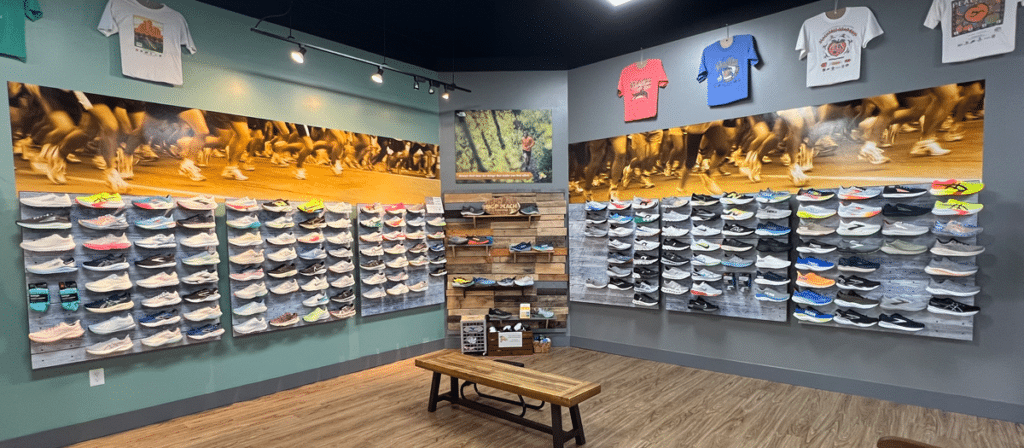
Step One: The Interview
We start with a conversation. The single most important question is:
“What are you using the shoes for?”
- Running shoes for a marathoner have different requirements than shoes for a teacher who’s on their feet eight hours a day.
- We’ll also ask about past shoes that worked, or didn’t.
- And yes, if you’ve got aches, pains, or running injuries, we want to know. That info helps guide us toward the right category of running shoes for plantar fasciitis, stability shoes, or neutral shoes.
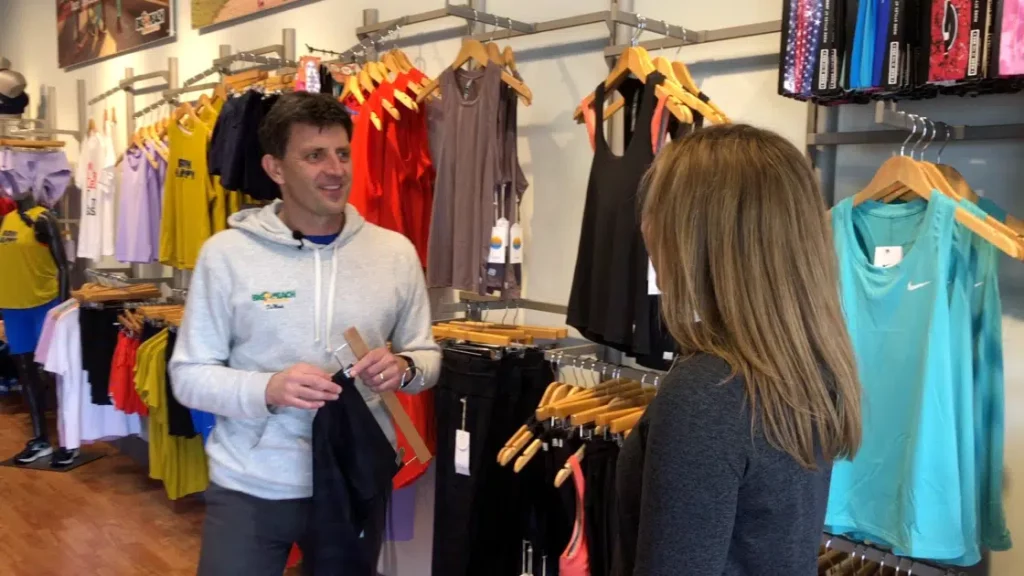
Step Two: The Science
Now we geek out a little. Tools matter:
- 2D Scanner: Captures an image of the bottom of your foot. It shows pressure points, arch depth, and arch length. Sometimes subtle, sometimes telling.
- 3D Scanner: This is where it gets more interesting (and useful). It gives us some starting points for length, width, volume, and even gives us insight into pronation (whether your foot rolls inward or stays neutral).
- Visual Inspection: Old-school but vital. We’re looking at the shape of your foot and how it matches up with shoe profiles.
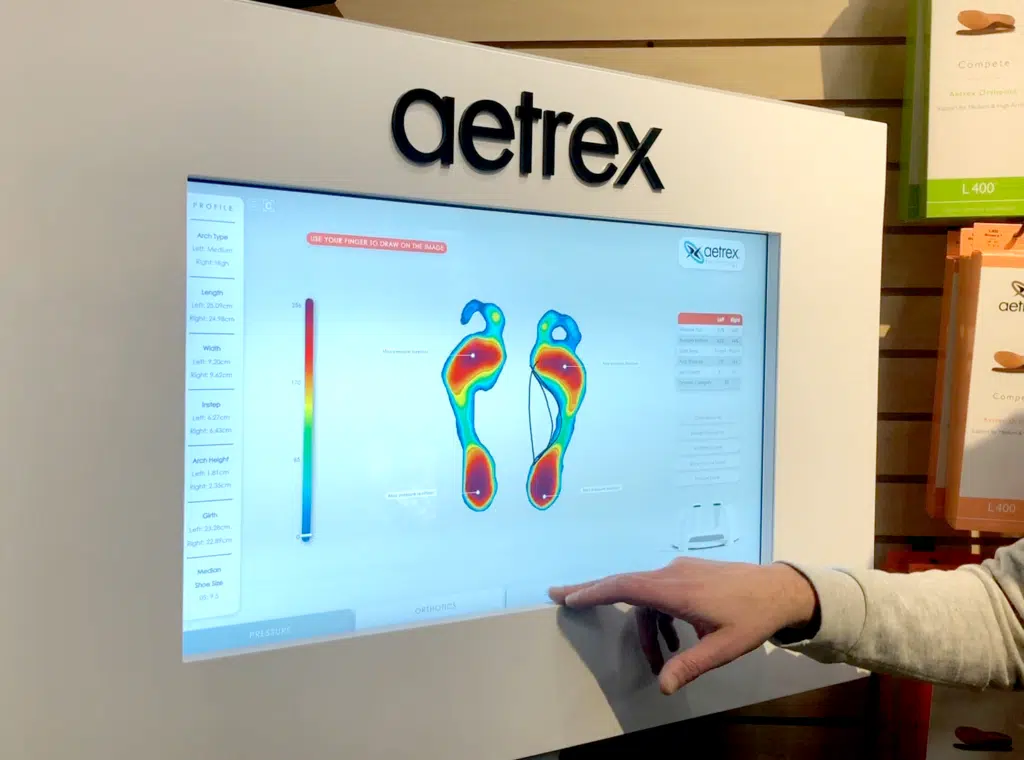
Step Three: The Video Gait Analysis
This is where “analysis” becomes more than just a buzzword. We put you in a neutral shoe and watch you walk or run on video. At mid-stance – when your body weight is entirely on one foot – we can see how stable (or unstable) your movement is. If your foot collapses inward (overpronation), a stability running shoe may be your best friend. If you stay neutral, you’ll likely do best in a neutral running shoe. Think of it as biomechanics meets real-world comfort.
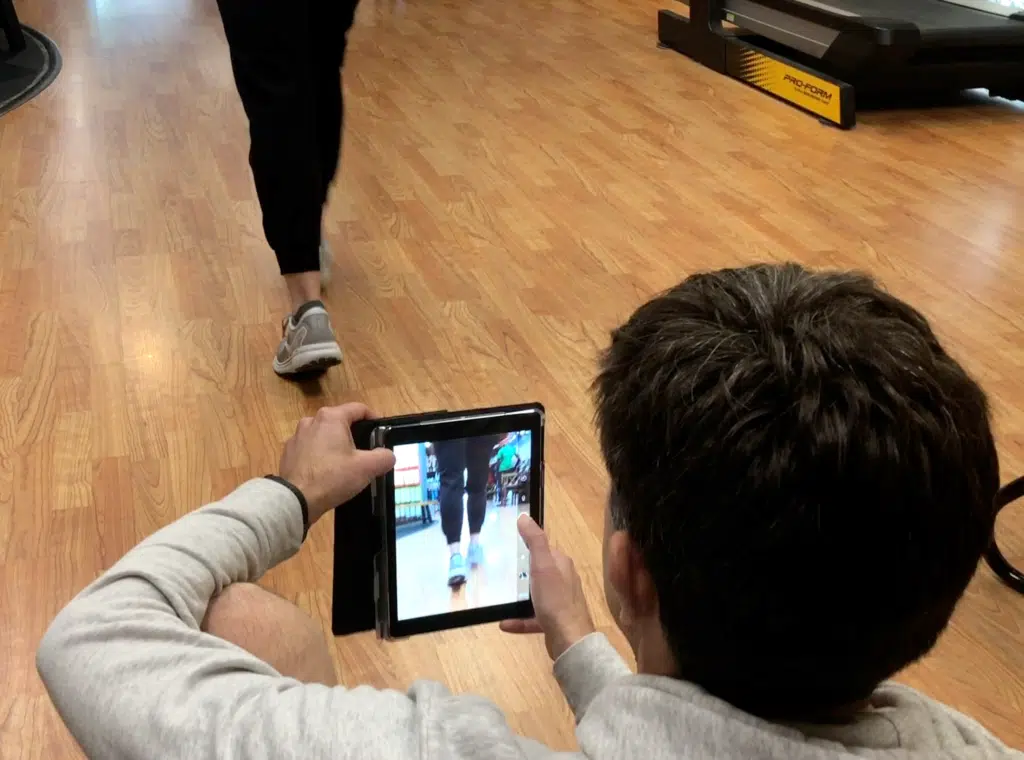
Step Four: Fit and Feel
This is the fun part, you get to try on shoes. We’re focused on two things:
- Fit: Toes need freedom (length, width, and volume). The midfoot and heel? Secure, but never restrictive. Think “gentle hug.”
- Feel: The right shoe should complement your stride. It should feel smooth, maybe even a little propulsive, like the shoe is helping you along rather than holding you back.
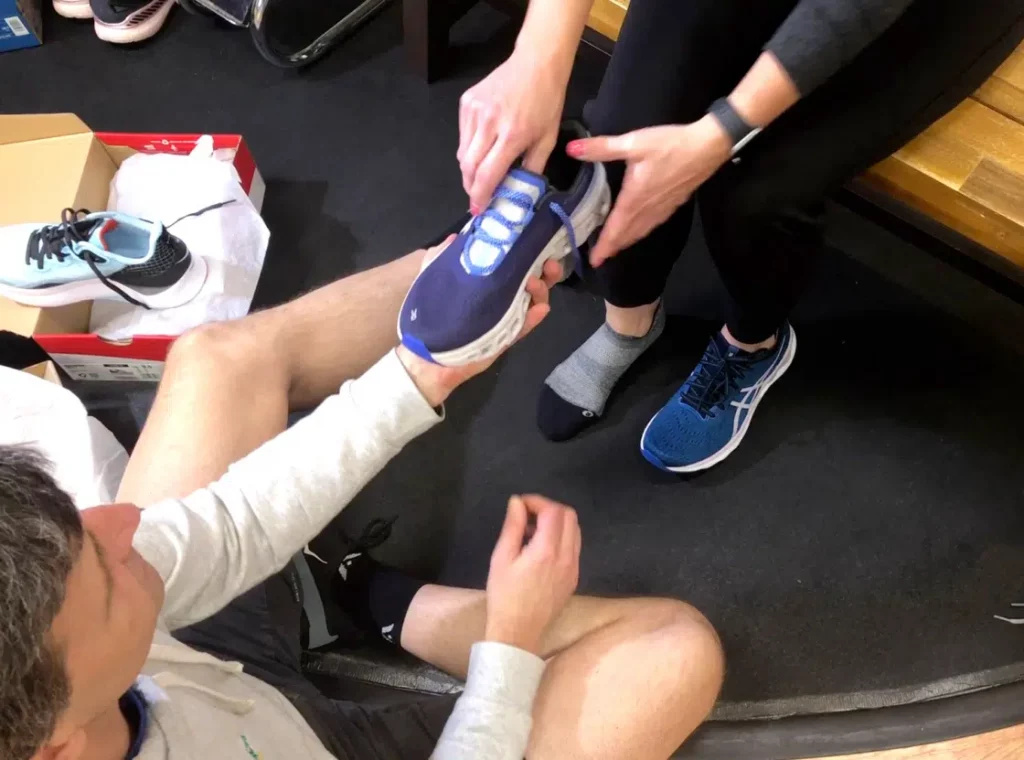
Why It Works: The Three Roles of a Shoe
Every shoe plays three key roles:
- Accommodate the foot – measured by length, width, and volume.
- Provide stability – assessed through gait analysis and pronation patterns.
- Protect against shock – delivered through cushioning and overall ride quality.
When all three are dialed in, you get more than just footwear; you get confidence, comfort, and performance.
Why Come to Big Peach East Cobb?
Sure, you could guess your size online. But when it comes to running shoes, walking shoes, or solving a riddle like the best shoes for flat feet, nothing beats the blend of technology + expertise + real human connection you’ll find at Big Peach East Cobb.
Our fit process isn’t just about preventing injuries, it’s about making movement more enjoyable. And that’s why so many people come to us first.
FAQs About Shoe Fitting & Gait Analysis
Yes, every day. Our shoe fitting experts will guide you from start to finish.
Yes. Video gait analysis is part of our fit process.
Typically 15–30 minutes. We move fast, but don’t want to rush the important stuff.
Nope. Walk in anytime, we’re ready when you are.
Absolutely. Our goal is to help you find the right shoes, and this helps us do just that.
